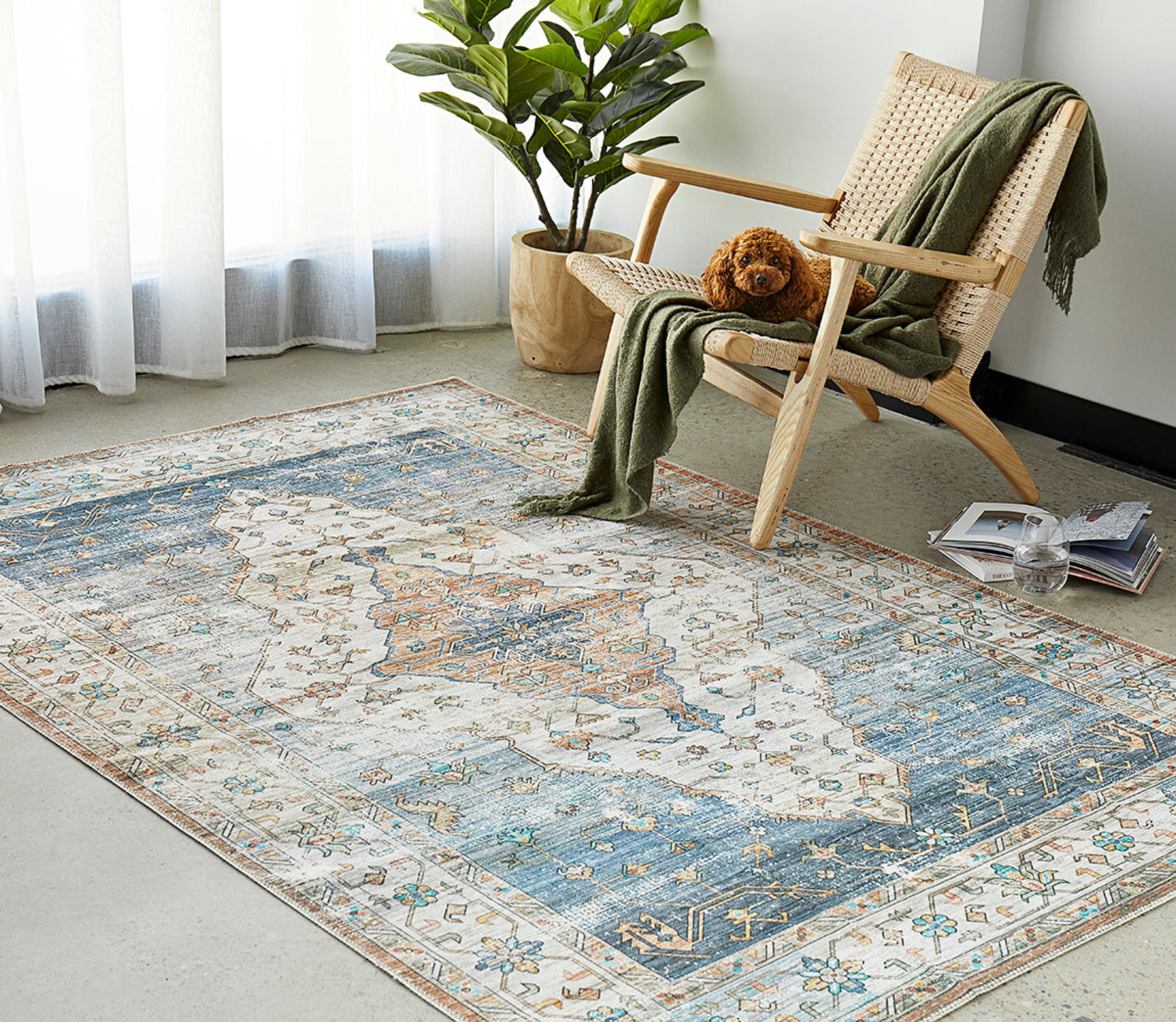Your complete guide to Hand Knotted Rugs
Manufacturing time - 5 to 7 months
When you buy a hand knotted rug, you're buying something that's one of a kind. No two are the same, and each has the characteristics and features of it's creator. This is what can add to the price of a hand knotted rug. These rugs can be used in high traffic areas and will last over 20 years! Areas such as hallways, family room and even door way entrances are a fine home for these rugs.
These rugs are made from one of the following materials:



Silk can also be a component of these rugs. You'll find that with these types of rugs, the knots and design appearance at the back may not be even. This is due to the hand made nature of these rugs and you can even tell the quality of the rug by checking out the back and evaluating the detail. How closely does it match up with the design on the front and how much detail is there? If you wanted to do some further testing, pull out a strand from the rug. If you've pulled out a silk or wool strand it will smell like hair when burned. Cotton will smell like paper if burned. Hand-knotted rugs are known as being some of the most durable of all rug types due to the meticulous weaving process required.
How are hand knotted rugs made?
A skilled weaver will sit behind the loom and then take the time to individually tie each knot on to the vertical strings of that loom as seen below. The weaver will begin to tie threads on to the loom, which will become the edge of the rug. The fibre runs across the loom and combines with the (usually) white strings (called the warp) already in place.

Knots are tied to the warp string and the weaver will use a hook or knife to cut that knot and then tie it. A good weaver will approach the two second mark per knot. Carving is another technique that can be combined with hand knotting. It's quite a difficult process and can only be done by the most skilled weavers! Carving a rug will give the rug a three dimensional look and highlights certain areas of the design.

The way these rugs are constructed means that similar to flat-weave rugs, they're also quite thin. This process allows for the fibres of wool, cotton, silk or jute to be used, although wool is the most common. Some of the higher end rugs will include patterns or highlights made of silk, which serves as a natural enhancement of the already beautiful design!
Catwalk Rugs - Walk on Luxury



